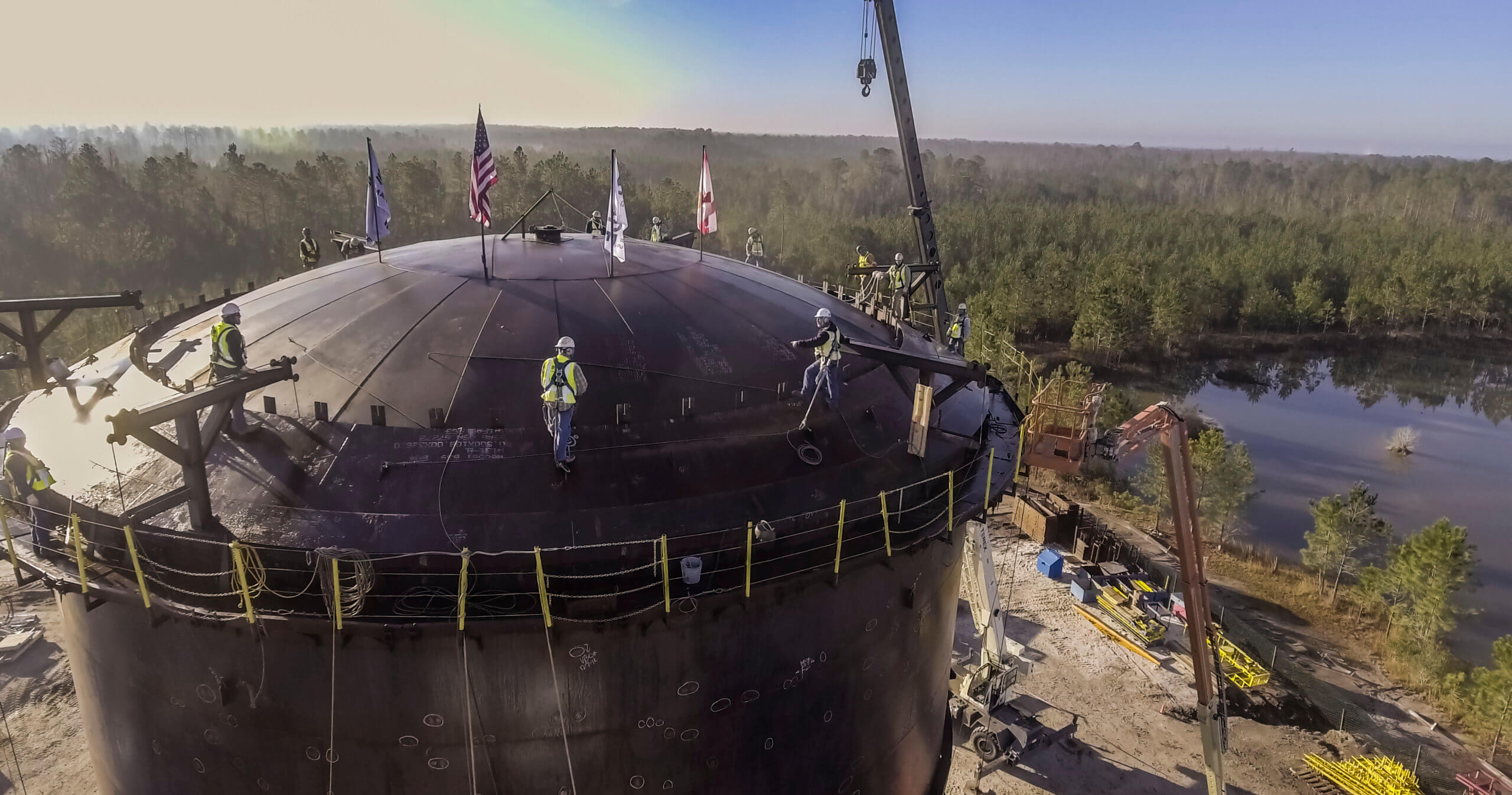Boil-Off Gas and Cryogenic Storage
The demand for natural gas continues to grow. According to the Department of Energy, consumption increased by 10 percent from 2018 to 2019. Electric power producers are converting from coal to clean-burning natural gas, driving much of the demand. Natural gas produces far fewer emissions than other fossil fuels when burned for energy.
However, natural gas presents one major challenge. Gas has a lower density compared to other fuels, making it more challenging to transport. The solution is to cool natural gas to extremely cold temperatures to increase its density. At -260°F, gas can be transported efficiently and safely as liquid natural gas (LNG). Cryogenic storage tanks are designed to keep gas cold and in its liquid state, but heat slowly affects the tanks. Inside the tanks, the LNG evaporates producing vapor, which is commonly referred to as boil-off gas. This process causes an increase in pressure inside the tanks. To relieve pressure in LNG tanks, boil-off gas can be re-liquified but this process requires lots of space and equipment. Another option is to use the boil-off gas for fuel or to simply burn it. The latter two options are especially practical for tanker ships as they transport gas across the ocean. Excess gas can be fed into a tanker ship’s engine or the gas can be dispersed through a gasification unit.
Challenges of LNG
Even with safe handling, boil-off can present other challenges. As boil-off gas develops, the most volatile components in LNG, nitrogen, and methane, boil-off first. As this process occurs it changes the composition and quality of the LNG over time. This is known as aging. Even a relatively minor change can have major consequences. LNG aging is mostly a concern when LNG is stored for long periods of time, such as marine transport and storage. If aging is not adequately addressed, the LNG will no longer meet the composition specifications upon delivery. The boil-off gas will also cause an increase in the tank pressure over time. Natural gas needs to be kept at a consistent pressure to remain liquefied. Tanks can handle a moderate rise in pressure for a short period of time, but the boil-off gas will need to be dealt with if the gas is to be stored for prolonged periods. To relieve pressure in LNG tanks there are three options: the boil-off gas can be re-liquefied, used as fuel, or burned in a gasification unit. These complex problems are why LNG requires so much precision in cooling, storage, and transportation. The cryogenic storage systems must be carefully engineered and expertly calibrated after installation.
Matrix PDM for Natural Gas Processing & Cryogenic Storage
Few contractors possess the expertise to engineer low-temperature and cryogenic storage facilities and related process systems. Matrix PDM is proud to serve the natural gas industry. Our team specializes in LNG and liquid propane (LPG) storage facilities of all sizes. Whether you need a single or full containment LNG storage facility, we have expert engineers who can design high-quality low-temperature storage tanks and terminals. We also have the capability to design ammonia storage facilities, LIN/LOX storage tanks and spheres, and other steel plate structures.
Contact us to learn more about our cryogenic storage capabilities.
